Sort to Recycle
Design a device that sorts objects using their physical properties, including shape and size.
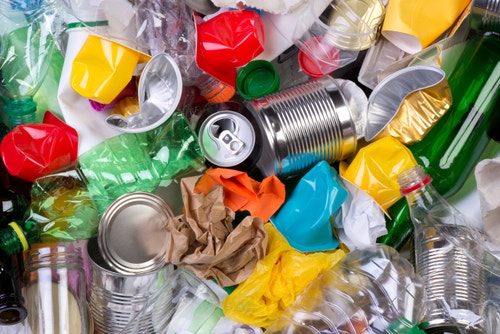
1. Preparation
(15-30 minutes)
• Read the general preparation in the “Classroom Management” chapter.
• Read about the project so you have a good idea of what to do.
• Define how you want to introduce this project: Use the video provided in the project in the WeDo 2.0 Software, or use material of your own choice.
• Determine the end result of this project: the parameters to present and produce the document.
• Make sure timing allows for expectations to be met.
Important
This project is a design brief. Please refer to the “WeDo 2.0 in Curriculum” chapter for further explanations of design practices.
2. Explore phase
(30-60 minutes)
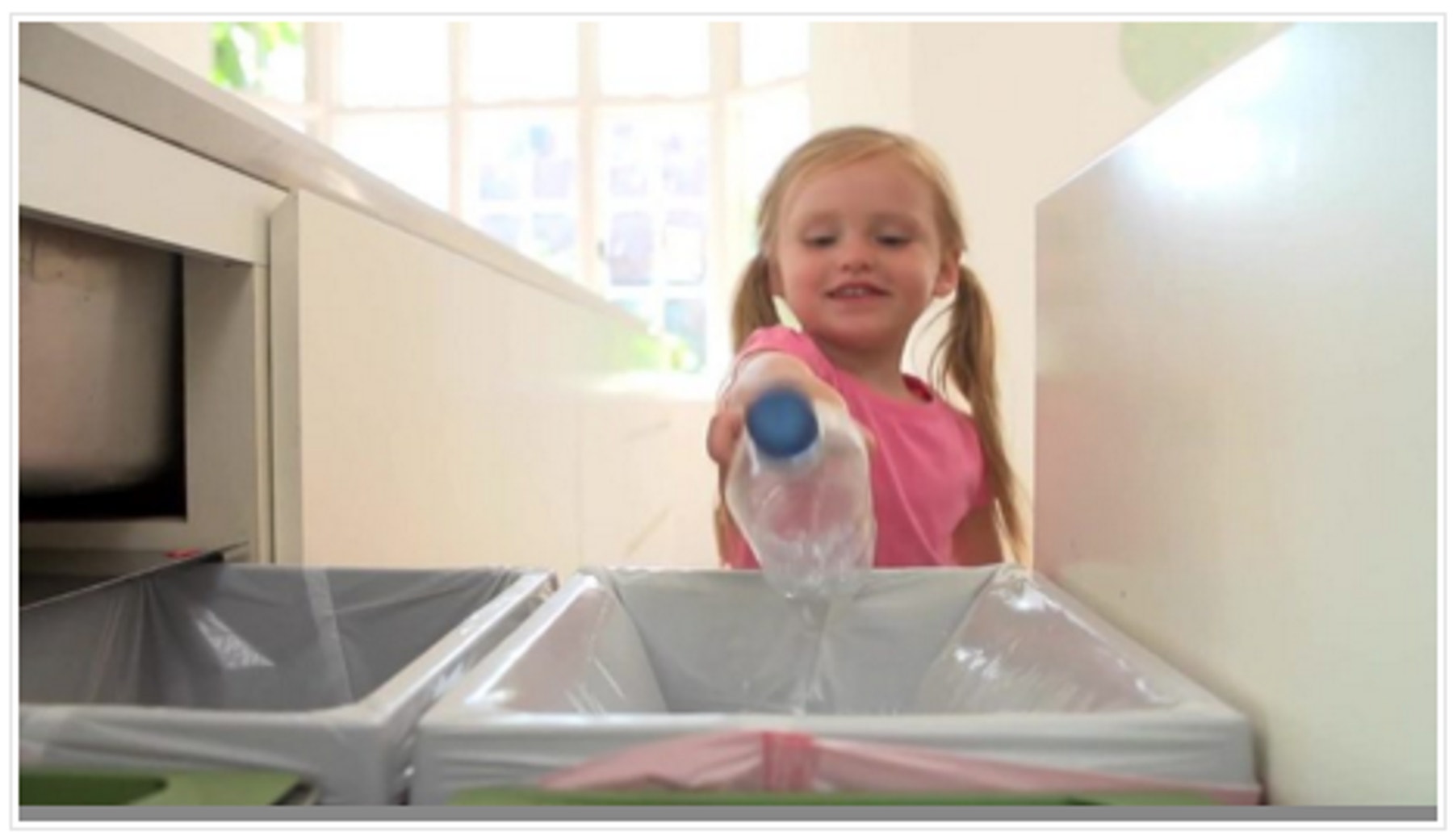
The introductory video may set the stage for the following ideas to be reviewed and discussed with students for this project.
Introductory video
Recycling material is one of the 21st century’s biggest challenges. Recycling can give a second life to the materials that you use. Getting more people to consistently recycle their waste is a challenge, and one way to encourage more widespread recycling is to make sorting methods more efficient:
- People must adopt behaviour that discourages the throwing away of waste into the same place.
- Materials typically must be sorted at the beginning of the recycling process, and many recyclable materials arrive at recycling centers all mixed together.
- People or machines can separate waste according to their kind and put all the paper, plastic, metal, and glass together.
- When a machine is used to sort objects, it needs to use one of the object’s physical characteristics, such as weight, size, shape, or even its magnetic properties, to process them.
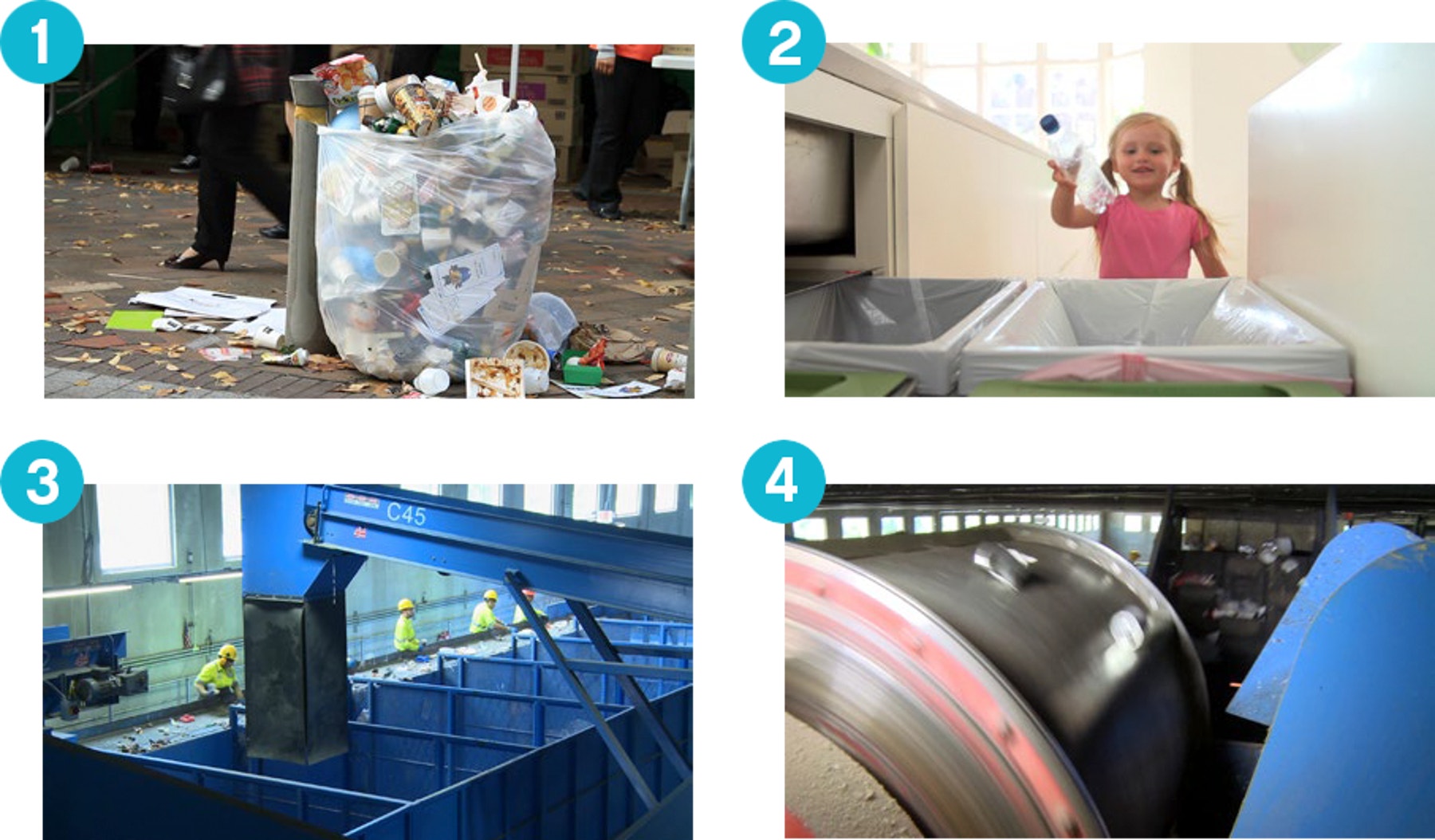
Questions for discussion
- What does it mean to recycle?
Recycling is a process for making waste materials into something new.
Commonly recycled items include paper, plastic, and glass. - How is recyclable material sorted in your area?
Describe, with your students, if the materials are sorted by hand or machine. Ask students if they sort recycling at home or if they sort anything else at home. - Imagine a device that can sort waste according to its shape.
The answer to this question will guide students to the design process. - Where does your recycling material go?
The answer to this question will be different according to your location, but most likely, materials will go to the local recycling facility. Non-recyclable material will go to a different location, such as a landfill or an incinerator.
Have your students collect their answers with text or pictures in the Documentation tool.
3. Create phase
(45-60 Minutes)
Build and program a truck to sort recyclable objects
Students will follow the building instructions to create a sorting truck and
the objects.
1. Build a sorting truck.
The model used in the project uses a pulley system to flip the truck load on an axis. At first, both parts should be able to go through even though they are different shapes. Later, students will be challenged to modify the design so that the objects are sorted by size.

2. Program the truck bed.
This program will turn the motor on in one direction for 1 sec. to make sure the bed is completely at its reset position. It will wait 3 sec. for the boxes to be loaded by the student, play a machine sound, and then flip the bed to drop the boxes.

Important
Students may have to adjust the power level of the motor in order for this program to work. Motors can vary from one to another.
Suggestion
Before your students start designing solutions, have them change the parameters of the program so they fully understand it.
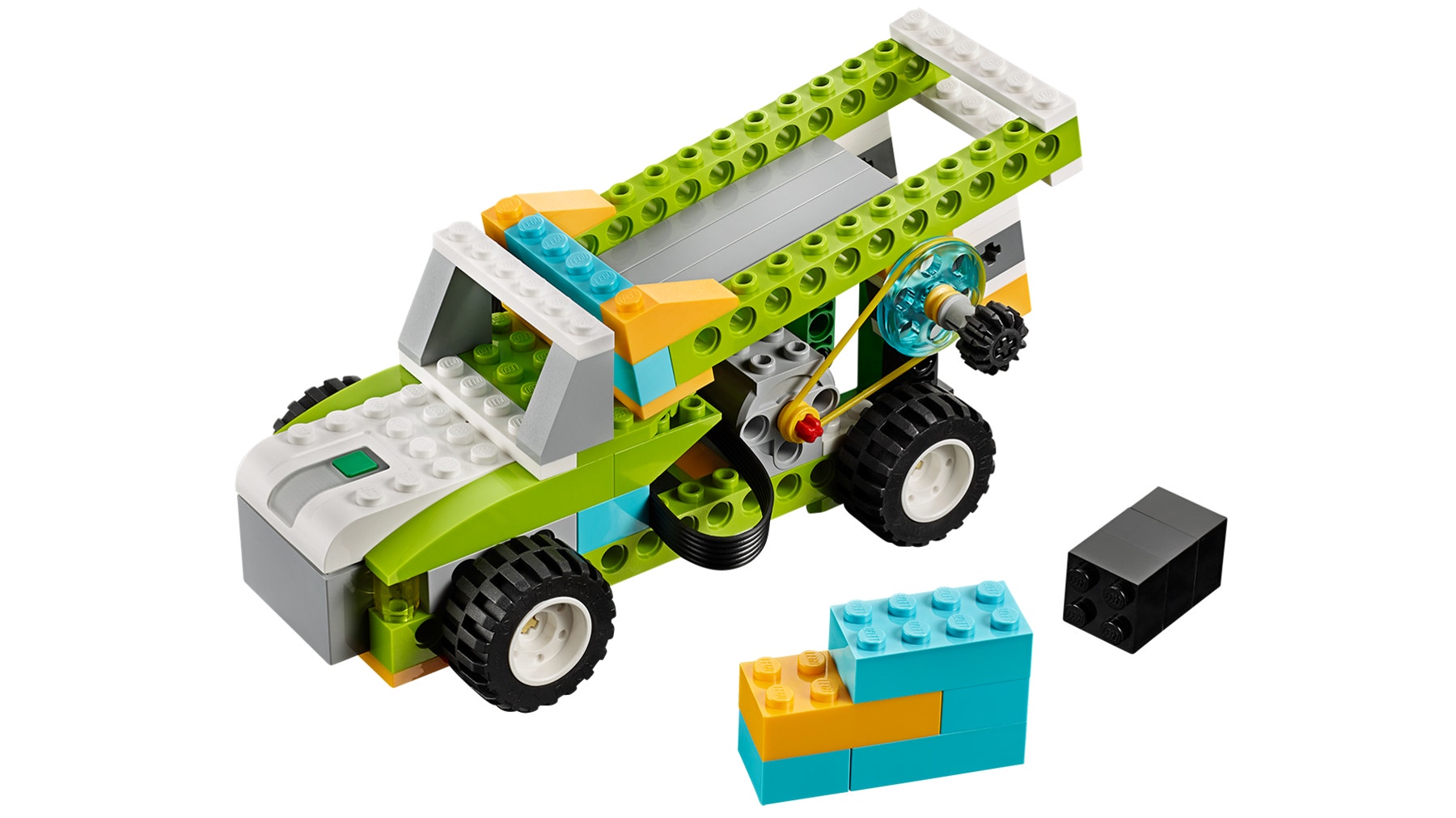
Design another solution
From this model, students should be able to change the design of the truck load to sort the boxes into two different groups according to their shape. Allow students a lot of flexibility. There are simple and more complex solutions to this problem that may involve changes to the design of the sorter, the program, or a combination of both.
Solution ideas
1. Modify the truck to sort the boxes.
By removing the LEGO® back plate of the truck, one box should be able to fall into the first hole while the other box slides off the back due to its shape. Other designs may work just as well.
2. Use the Motion Sensor to sort.
By placing the Motion Sensor on the side of the load in the proper position and by creating the right program, the sensor can detect objects based on size.
3. Sort the boxes outside the truck.
This solution would require building something else in addition to or instead of the truck. The boxes can be dropped at the factory and sorted in another way.
Important
It is important to note that because a student model will vary according to student choice, there are no building instructions or sample programs provided to students for this part of the project.
Design further solutions (optional, 45-60 minutes)
Use the “Design further solutions” section of the student project as an optional extension. Keep in mind that these tasks extend upon those of the previous section and are designed for older or more advanced students.
Ask students to design a third object to sort. In order to sort items, students will probably have to move away from the truck model and design another type of device:
- Sort the objects using a conveyor belt.
- Sort the objects using a robot arm.
- Sort the objects using two different devices.
Note that it should not be important if the device works perfectly or even that students find a successful solution. The important part is that the reasoning behind the sorting principles is well-articulated as students apply principles of engineering design.
Collaboration suggestion
By grouping teams together, students will get more options to create sorting strategies. You could have one team sort some of the objects and then require the second team to sort them even further. For example, the first team could sort small objects from the medium and large ones. The second team would then sort the medium from the large.
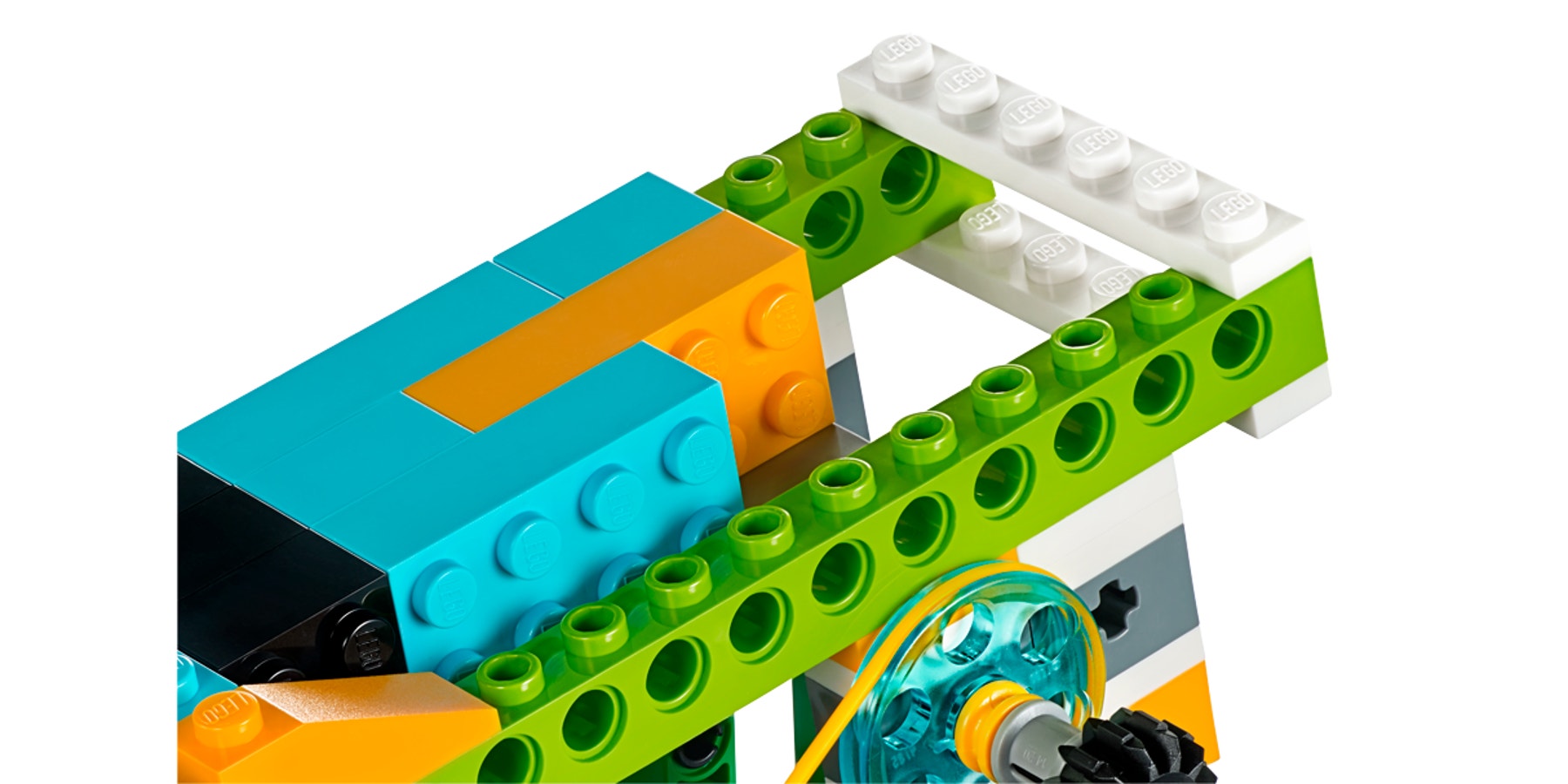
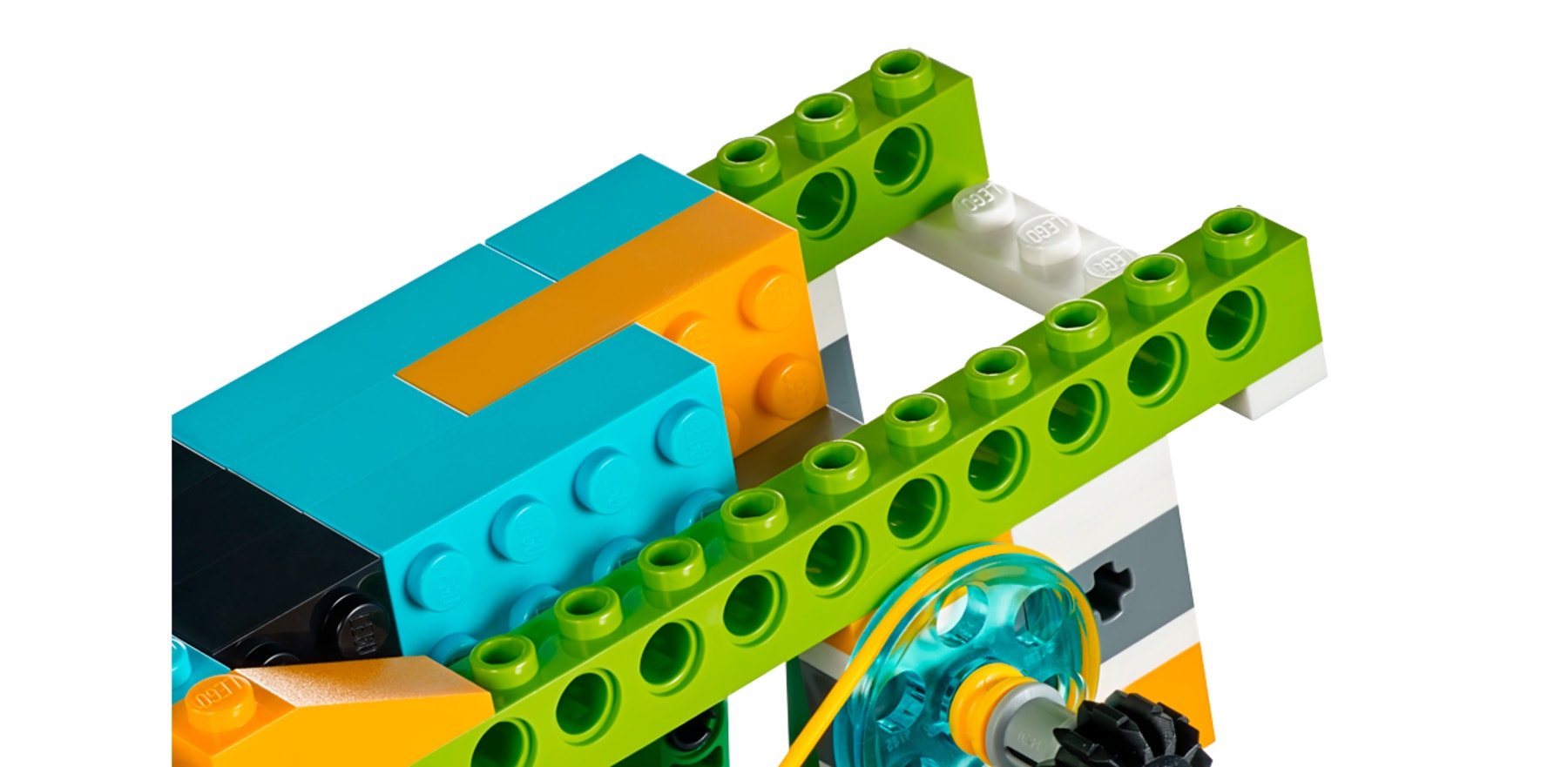
4. Share phase
(45+ minutes)
Complete the document
Have students document their project in several ways:
• Ask students to take a picture of every version they have created and ask them to explain the most successful solution or the one with the most potential.
• Ask teams of students to compare and contrast their designs with each other.
• Ask students to include in their documentation an explanation of how an object could be sorted by shape and how the shape of the object was important to the solution.
Present results
Students should describe how their solution is used to sort objects according to their shape.
To enhance students’ presentations:
• Have students present how they worked toward solving this problem.
• Have them explain the challenges they encountered and how they worked to modify their designs and programs as a result.
• Ask them to describe the context around their explanation.
• Discuss if this solution is applicable to real life.
Project assessment
NGSS project assessment rubrics
You can use these assessment rubrics with the observation rubrics grid, which you will find in the “Assess with WeDo 2.0” chapter.
Explore phase
During the Explore phase, make sure the student is actively involved in the discussions, asking and answering questions, and can explain how the properties of an object help them sort it.
- The student is unable to provide answers to questions or participate in discussions adequately or adequately describe the properties of the object and how it may be sorted.
- The student is able, with prompting, to provide answers to questions or participate in discussions adequately or, with help, describe the properties of the object and how it may be sorted.
- The student is able to provide adequate answers to questions and participate in class discussions or describe the properties of the object and how it may be sorted.
- The student is able to extend the explanations in discussion or describe the properties of the object and how it may be sorted.
Create phase
During the Create phase, make sure the student works well with his/her team, demonstrates the use of the engineering design process, and collects and uses information to solve problems.
- The student is unable to work well on a team to solve problems, does not demonstrate the ability to use the engineering design process to solve problems.
- The student is able to work on a team to solve problems or, with help, demonstrate the use of the engineering design process to collect and use information to solve problems.
- The student is able to work on a team to solve problems or demonstrate the use of the engineering design process to collect and use information to solve problems.
- The student works as a team leader or is able to extend the use of engineering design or collect and use information to solve problems in many ways.
Share phase
During the Share phase, make sure the student can explain how he/she solved the problem and communicates how he/she used the size of objects to sort them.
- The student does not explain how he/she solved the problem and does not communicate how he/she sorted the objects by size.
- The student can partially explain how he/she solved the problem and communicates, with prompting, some ideas on how he/she sorted objects by size.
- The student can explain adequately how he/she solved the problem and communicates how he/she sorted objects by size.
- The student can explain, in detail, how he/she solved the problem and communicates very clearly and thoroughly how he/she sorted objects by size.
ELA project assessment rubrics
You can use these assessment rubrics with the observation rubrics grid, which you will find in the “Assess with WeDo 2.0” chapter.
Explore phase
During the Explore phase, make sure the student can effectively explain his/her own ideas and comprehension related to the questions posed.
- The student is unable to share his/her ideas related to the questions posed during the Explore phase.
- The student is able, with prompting, to share his/her ideas related to the questions posed during the Explore phase.
- The student adequately expresses his/her ideas related to the questions posed during the Explore phase.
- The student uses details to extend explanations of his/her ideas related to the questions posed during the Explore phase.
Create phase
During the Create phase, make sure the student makes appropriate choices (i.e., screen capture, image, video, text) and follows the established expectations for documenting findings.
- The student fails to document findings throughout the investigation.
- The student gathers documentation of his/her findings, but documentation is incomplete or does not follow all of the expectations established.
- The student adequately documents findings for each component of the investigation and makes appropriate choices in selections.
- The student uses a variety of appropriate methods for documentation and exceeds the established expectations.
Share phase
During the Share phase, make sure the student uses evidence from his/her own findings during the investigation to justify his/her reasoning. The student adheres to established guidelines for presenting findings to the audience.
- The student does not use evidence from his/her findings in connection with ideas shared during the presentation. The student does not follow established guidelines.
- The student uses some evidence from his/her findings, but the justification is limited. Established guidelines are generally followed but may be lacking in one or more areas.
- The student adequately provides evidence to justify his/her findings and follows established guidelines for presenting.
- The student fully discusses his/her findings and thoroughly utilizes appropriate evidence to justify his/her reasoning while following all established guidelines.
5. Differentiation
To ensure success, consider giving more guidance on building and programming, such as:
• Give more time for students to understand how the first prototype works.
• Allow them time to create more than one prototype.
• Explain engineering-based design.
Also, be specific as to the way you would like them to present and document their findings, such as with a sharing session among teams, for example.
Design further solutions
For more experienced students, you may want to allow them extra time for building and programming to allow them to create different types of devices that sort according to other properties beyond shape. Ask them to use the design process to explain all the versions they made.
Students’ misconceptions
Students will often confuse weight, mass, and volume. They will make the correlation that the heavier an object is, the bigger it is. They will also not connect gravity to the content. Be sure to formulate equations in the areas of weight, mass, and volume for students.
Teacher Support
Students will:
Explore how better sorting methods for recycling can aid in cutting back the amount of waste that is discarded.
Create and program a device that will sort recyclables according to their size and shape.
Present and document the solution you have developed.




